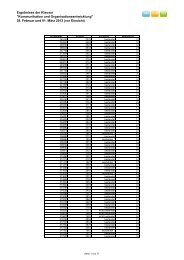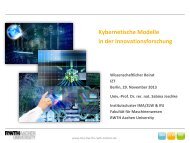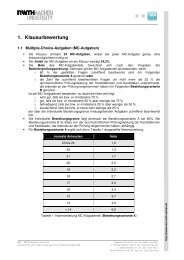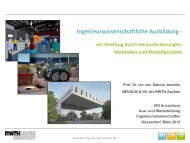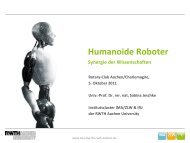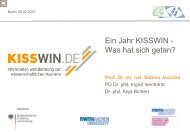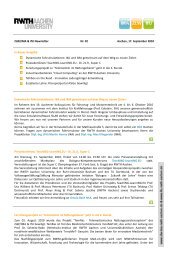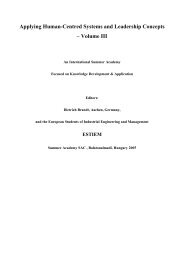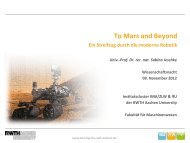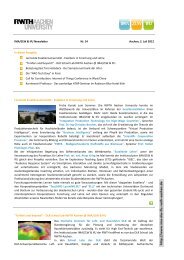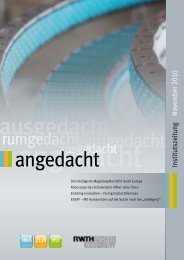Vol. II: Shaping Information and Communication ... - IMA,ZLW & IfU
Vol. II: Shaping Information and Communication ... - IMA,ZLW & IfU
Vol. II: Shaping Information and Communication ... - IMA,ZLW & IfU
Create successful ePaper yourself
Turn your PDF publications into a flip-book with our unique Google optimized e-Paper software.
205<br />
L5: Need to be aware of the formal limitations imposed by the rigidity of funding structures<br />
Funds should be directed to project activities rather than allocated to individual institutions.<br />
Where as the EU partners have had considerable experience of the complexity <strong>and</strong> rigidity of<br />
European funding rules, this was a new cultural experience for Indian partners. In crosscultural<br />
collaborations the project coordinators <strong>and</strong> partners should be aware of the potential<br />
negative synergy between the very rigid financial/accountability system of Indian institutions<br />
<strong>and</strong> the EC funding structure. There is a very real risk that these will work together to make<br />
flexible adaptation to changing circumstance almost impossible to make. Funding should be<br />
managed in a central pool rather than allocated to individual institutions; <strong>and</strong> should be used<br />
to support activities rather than the personnel. The coordinators have to recognise the<br />
asymmetry between the Indian institutional norms <strong>and</strong> funding terminology used by the EC.<br />
We should also be aware that the notion of the equality of funding advocated by the EC,<br />
might become a hindrance. We found that project partners, especially Indian partners saw<br />
funding as the only yard stick of equality, separated from the technical equality as the funding<br />
was seen as the only criteria for evaluation, rather than focusing on the technical contribution<br />
as the evaluation criteria it should have been.<br />
L6: Need to build the project on both the individual interests <strong>and</strong> institutional contexts<br />
The strength of this project is that it started <strong>and</strong> remained mainly as a network of individuals,<br />
<strong>and</strong> this facilitated very effective collaborations at the personal levels. Because of this<br />
personal development, it maximised institutional impact. It is our experience that in India,<br />
bottom up innovations are very difficult <strong>and</strong> top down developments are rather slow.<br />
Engaging the interest of the committed individuals <strong>and</strong> supporting the development of their<br />
profiles within their institutions proved to be an effective strategy.<br />
L7: Need to cultivate both big <strong>and</strong> little pictures, but project activities should have limited<br />
objectives to achieve<br />
Our experience is that proverbial advice “to think global <strong>and</strong> act local” is as valid here as<br />
anywhere else. It is necessary while keeping the overall picture in mind, that specific<br />
activities need to be very effectively targeted. We made the mistake on some occasions of<br />
attempting to satisfy too many objectives at the same event, <strong>and</strong> consequently sometimes<br />
seemed to lose specific focus. For example, some workshops <strong>and</strong> exchange visits were loaded<br />
with too many objectives during the same activity. A workshop could be simultaneously the<br />
forum for students (second level) participation, entrepreneurial networking, visibility events,




